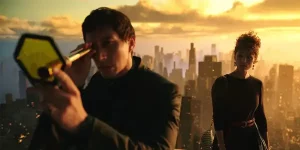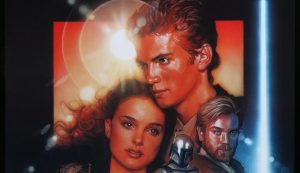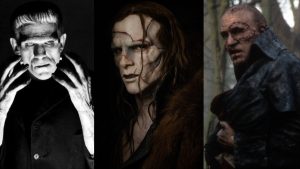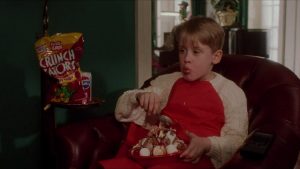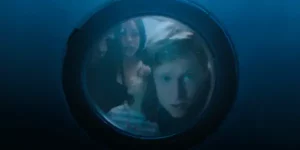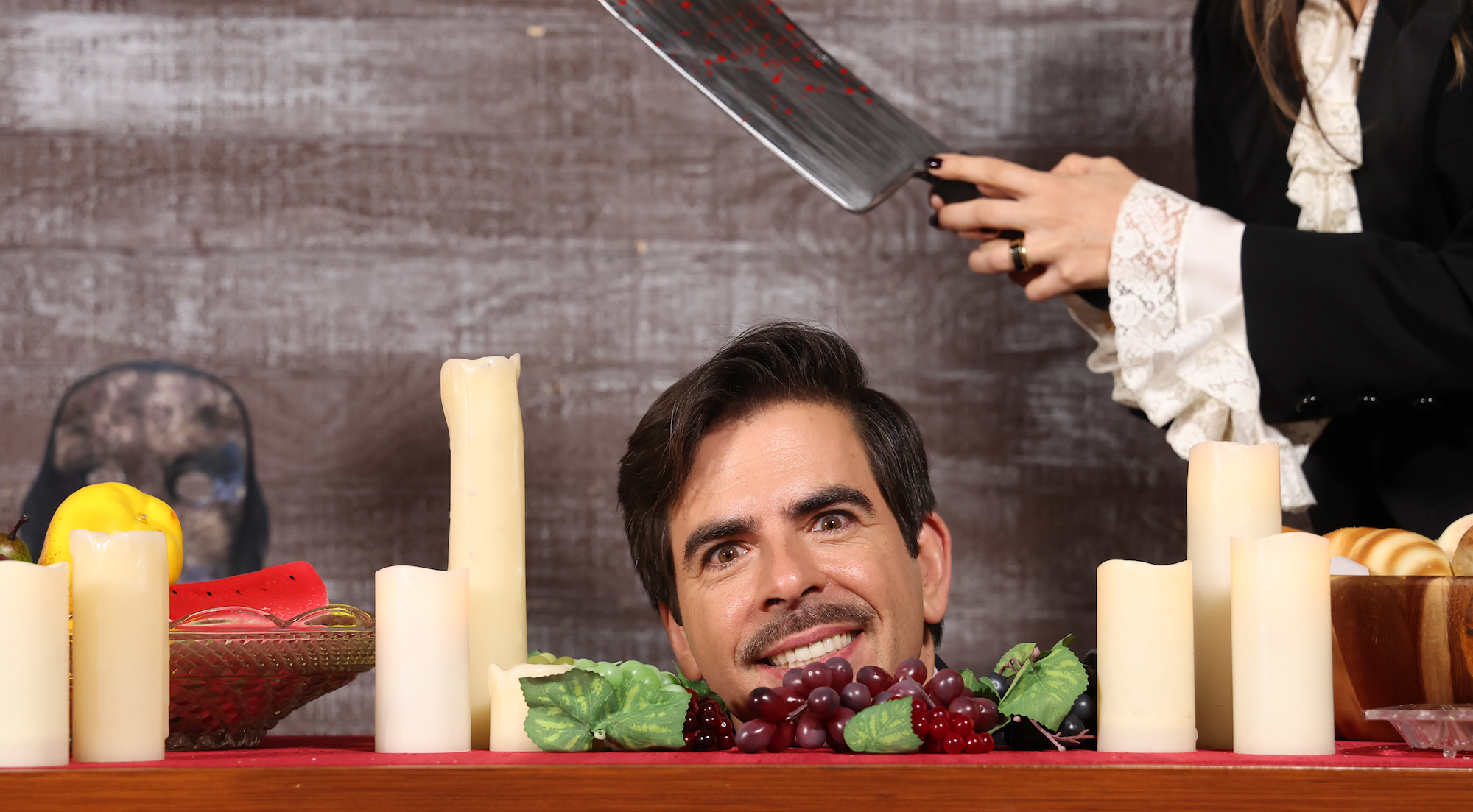
Thanksgiving came early this year for Eli Roth after his new holiday slasher film, Thanksgiving, arrived in cinemas to some of the best reviews of the filmmaker’s career. Well-regarded for groundbreaking 2000s horror films like Cabin Fever (2002) and Hostel (2005), Roth has been trying to make Thanksgiving for nearly as long. Originally conceived as a “joke” trailer to be inserted between Quentin Tarantino and Robert Rodriguez’s Grindhouse double feature in 2007, Thanksgiving has been an idea that never left Roth or his childhood friend Jeff Rendell, the latter of whom co-wrote both the Grindhouse trailer and the actual 2023 slasher that is making a bloody splash today.
When we spoke to Roth about Thanksgiving, we chatted about his and Rendell’s affection for the curious subgenre of holiday-themed slasher movies released in the 1970s and ‘80s, as well as how the director finally figured out the best way to spread the legend of “John Carver” to Plymouth, Massachusetts in the here and now. We also spoke at length about which holiday slashers he would recommend to horror fans and burgeoning enthusiasts just getting into the cult classics. Below are his picks in his own words.
Black Christmas (1974)
Bob Clark started three subgenres. He started the holiday slasher film with Black Christmas; he started the sex comedy with Porky’s; and he started the modern Christmas comedy with A Christmas Story. You can even argue that he started the zombie-vampire hybrid movies with Deathdream. He was such an innovator and such an incredible director. Completely underrated and underappreciated, but you definitely have to put the original Black Christmas up there, that’s the one that started it all.
But if you’re going to watch Black Christmas, you have to give credit where it’s due and watch Mario Bava’s [Carnage,] Twitch of the Death Nerve, also known as Bay of Blood, from 1971 because that is really where a lot of Black Christmas and the killer POV came from. You could also argue that Twitch of the Death Nerve was very influenced by Peeping Tom, and we can go all the way back down the chain to the beginning of cinema.
Halloween (1978)
John Carpenter’s Halloween, of course, is the one that [cemented the subgenre]. Black Christmas was a hit, but not a hit on the level of Halloween, which changed movies independent cinema as we know it.
Mother’s Day (1980)
This movie, even though it’s called Mother’s Day, was not about Mother’s Day. It’s written by Warren Leight with Charles Kaufman. It’s this incredible satire. It’s a brutal movie. I mean, the stuff they do in this movie is pretty sick. But I didn’t realize how much Hostel II took from Mother’s Day. Every one of my films in some way takes from Mother’s Day. I’ve seen that movie probably 100 times, but it’s a movie that asks you to follow and sympathize with the killers. Like you’re with these three girls, they get abducted, and then you start to go with the killers and you’re with them and you’re living with them, you’re in their house and you’re watching these brothers fight, and you’re watching them train, and the minutiae.
It’s a movie that was made for $100,000. To me, it’s a great example of using the camera to show character. Like if you want to make a movie and you want to learn how to introduce your characters, and say what the characters’ personalities are with the camera, look at the way Charles Kaufman introduces the three different girls in their three settings and the way they’re photographed. The way one of them [when] the man grabs [her], he dominates the frame, she’s dominated by men in her life. The other one is very claustrophobically shot, she lives in this claustrophobic apartment with her mother, and the other one is this kind of freewheeling free spirit, so the way the camera moves following the roller skates in this Boogie Nights kind of scene in the backyard.
It’s really such a smart film, they created commercials [for it]. Every time the kids are constantly gorging on television, food, and garbage, it’s like the sewer of pop culture overflowing… So even though yes, there’s a really, really brutal, horrible, an insane rape scene—they dress the girl like Shirley Temple and rape her in front of her mom—there’s like stuff that’s very uncomfortable in the film, but the filmmaking itself in terms of being what you can do on a low budget, it’s pretty incredible. There’s a reason that that movie has lasted.
New Year’s Evil (1980)
New Year’s Evil is a fun one. Not my favorite, but if you’re going to be a completist, you need to see New Year’s Evil.
My Bloody Valentine (1981)
It’s such a fun movie. What I love about My Bloody Valentine is it’s set in America, and in the end credits, they sing a song where they recap the story of the movie in very thick Canadian accents, which I love. But it’s a really, really good guessing game of guessing who the killer was. Unfortunately, that movie was definitely butchered by the studio and a lot of the original negative is lost, because I think it was the first horror movie released after the Reagan assassination attempt when all of a sudden they had to pull back. The movies got it. [They] said, “Why are people shooting guns at the president? Cut all the movies [down]. It’s these damn horror films!”
Friday the 13th: Part 3 (1982)
I mean, Friday the 13th isn’t a holiday, but it’s a date. So they [went], “Well, we don’t have one in June. Let’s just call it Friday the 13th, which now has become a holiday because of the movie. The classic [of the series] is Friday 13th Part III in 3D. People forget that’s where he got the hockey mask. I’ll always love that one.
Silent Night, Deadly Night (1984)
When we were kids, [screenwriter Jeff Rendell and I] went to Silent Night, Deadly Night, and it changed our lives. One of the seminal moviegoing experiences. I think we were 12 years old and we were not supposed to see it. There was a huge controversy about the movie, and the guy at the ticket booth refused to sell Jeff’s dad the tickets. Because Jeff’s dad and his younger brother were gonna go into Supergirl, and we were gonna go into Silent Night, Deadly Night, and the guy [at the box office] said you have to accompany these kids. And Jeff’s dad screamed at the ticket guy going, “These fucking kids see everything anyways, what the hell difference does it make?!” And so of course that added to the experience of Jeff’s dad yelling at some teenager trying to convince him not to let us in to see this movie, and we just cheered every kill and every death.
… It’s such a fun movie. It really takes its time, and they do some really traumatic stuff in that film. But I mean this guy working in that Santa store, witnessing the tragedy, the opening scene with the old man… watching your parents get murdered by someone in a Santa suit. [Laughs] And then of course, he is forced to put on a Santa suit and snaps and goes on a killing rampage. The sledding scene. The deaths are so fun, they’re so inventive, it has a terrific ax.
April Fool’s Day (1986)
Love April Fool’s Day, [directed by] Fred Walton. A lot of people don’t like it because of the ending. They feel like it negates the movie, but I really, really love it. I think the kills are really creative; they’re really fun. It has that Agatha Christie 10 Little Indians quality to it of people going out onto this remote island, getting picked off one by one. I remember seeing that movie in the theaters, thinking it was a really, really good, fun, inventive slasher film.
Thanksgiving is in theaters now.
The post Eli Roth’s Favorite Holiday Slasher Movies That Inspired Thanksgiving appeared first on Den of Geek.
